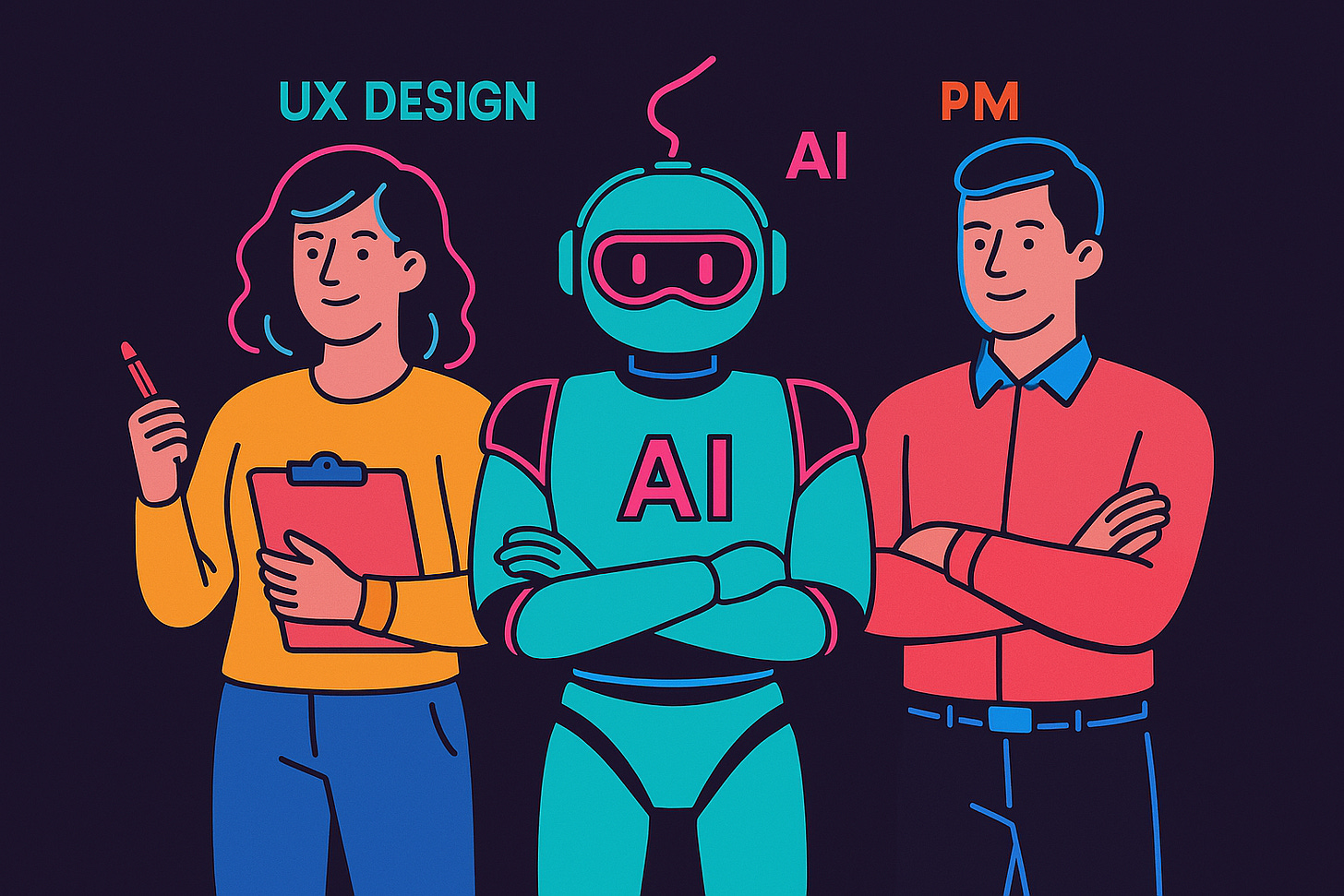The Double Diamond Is Dead — and I’m Not Sad About It
AI Breaks the Old Rules. That’s Our Invitation to Build New Ones.
I recently read a piece by Julie Zhuo, former VP of Product Design at Facebook, titled “The Death of Product Development”. It’s the kind of post that makes you pause think about the Avenger’s and two pizza teams. All concepts that are comfortable..and i’ve become complacent to. Julie paints a sharp picture of many product development teams: over-optimized, driven by data, held back by process and increasingly reactive. How do I interpret her core argument? That product development as we knew it — discovery-led, cross-functional, and visionary — is fading. In its place, teams are driven to be increasingly efficient, delivery-oriented, and execution-focused — a shift that leaves less room for creativity, exploration, and big, generative thinking.
Some of that hits home.
A lot of it is real.
But it’s not the whole story.
The truth is, we are witnessing the collapse of older working models. The double diamond is dead. The “Avengers-style” squad model — where you assemble one PM, one designer, one researcher, and a pod of engineers and just go — doesn’t hold up in today’s AI-fueled, ambiguity-soaked landscape.
But the solution isn’t mourning a loss.
It’s realizing we’re being invited into something new.
Something messier, more collaborative — and ultimately, more creative.
We’ve Outgrown the Double Diamond
The double diamond gave us structure. A way to diverge, converge, define, and deliver. It helped move teams from chaos to clarity. But like any process, it eventually hardened into dogma.
Now we’re facing questions that don’t fit cleanly into that framework:
What do you design when the system adapts in real time?
How do you define a problem when the user’s input shapes the output?
What does “deliver” mean when your product is probabilistic, not deterministic?
We’re no longer designing for static flows. We’re designing for behaviors, patterns, and learning systems. That demands more than a diamond — it demands a team fluent in experimentation, ethics, intuition, and iteration.
The Old Product Model Doesn’t Fit the New World
The traditional product trio worked when roles were clear and the problems well-bounded. But AI doesn’t respect boundaries.
A bug might be a UX issue.
Or a model bias.
Or a dataset gap.
Or all three at once.
In this environment, your PM isn’t just scoping features — they’re shaping data strategy. Your designer isn’t just sketching flows — they’re teaching the model how to behave. Your researchers aren’t just collecting insights — they’re stress-testing the ethics of your product in real time.
We need a new kind of design leadership. One that can coach across domains, facilitate ambiguity, and hold space for co-creation instead of handoffs.
UX in AI Is a Junior Designer — And That’s a Good Thing
Here’s the metaphor from Julie Zhuo that keeps ringing true for me:
UX in AI is like a junior designer.
Curious. High potential. Eager to help. But I still needs a lot of coaching.
The tools are new. The outputs are weird. The feedback loops are non-linear. If you try to force traditional UX patterns onto AI-native experiences, they often fall apart — or worse, create a false sense of confidence.
That’s not a failure.
It’s an invitation.
To return to the basics.
- To ask “what if” instead of just “what’s next.”
- To prototype not just screens, but behaviors and possibilities.
When we treat AI as a junior collaborator — not a threat, not a savior, but something we’re here to shape — we create space for mentorship, experimentation, and a re-centering of human creativity.
What We’re Getting Back: Creativity, Courage, and Curiosity
The best part of this transition? We’re getting our creativity back.
We’ve spent years optimizing flows, fine-tuning metrics, and chasing incremental improvements. But now, we’re facing the unknown again — and that’s where good design thrives.
We have the chance to:
Coach the next generation of tools like we coach people
Redefine collaboration across roles and disciplines
Create entirely new interaction models, patterns, and rituals
If product development is changing — and I think it is — then it’s not dying.
It’s evolving.
And that evolution demands a new kind of leadership. One that’s more human, more curious, and more courageous than ever.
So no, product development isn’t dead.
But the way we used to do it might be. And that’s a gift — if we’re brave enough to build what comes next.





This is a great article 👏
As a designer, trying to conform to existing frameworks or processes often takes away the freedom to think creatively. Problems don't always need to be approached through a single method or framework; each probably brings something different and unique that should be considered.